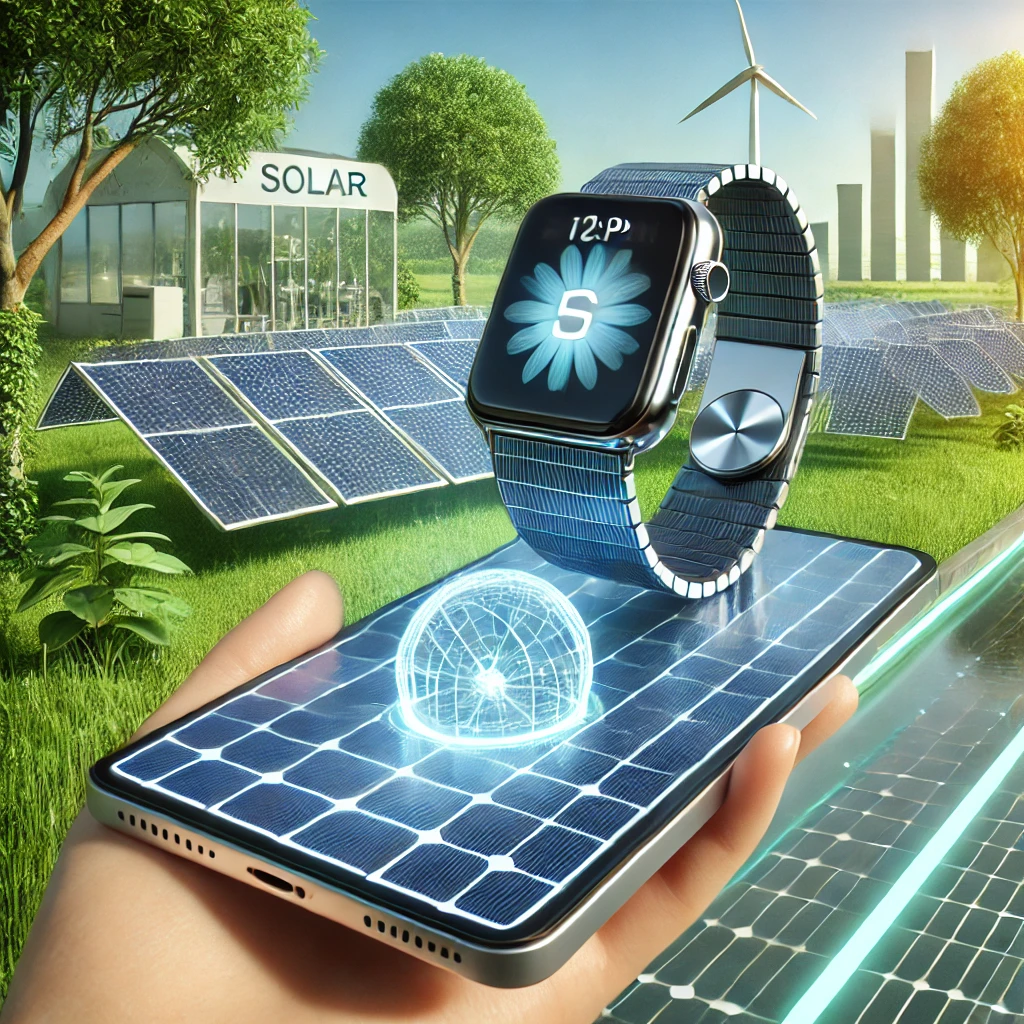Introduction
Solar-powered electronic devices are gaining popularity as the world shifts toward sustainable and renewable energy sources. These devices use photovoltaic (PV) cells to convert sunlight into electricity, reducing reliance on fossil fuels and lowering carbon emissions. With advancements in solar technology, solar-powered gadgets are becoming more efficient, affordable, and accessible.

How Solar-Powered Devices Work
Solar-powered electronic devices operate using solar panels that contain photovoltaic cells. When exposed to sunlight, these cells generate direct current (DC) electricity, which is then converted into alternating current (AC) using an inverter. The electricity is either used immediately or stored in rechargeable batteries for later use.
Types of Solar-Powered Electronic Devices
1. Solar-Powered Mobile ChargersPortable solar chargers allow users to charge smartphones, tablets, and other small devices using solar energy. They are ideal for outdoor enthusiasts, travelers, and people in remote areas with limited electricity access.
2. Solar-Powered Smartwatches and WearablesBrands like Garmin and Casio have introduced smartwatches that recharge using sunlight, extending battery life and reducing dependency on frequent charging.
3. Solar-Powered LaptopsCompanies are developing laptops that integrate solar panels, allowing users to work in outdoor environments without worrying about battery life. This is particularly beneficial for remote workers and students in areas with unreliable electricity.
4. Solar-Powered LED LightsSolar LED lights are widely used for street lighting, garden lights, and emergency lighting. They store solar energy during the day and provide illumination at night, reducing electricity consumption.
5. Solar-Powered Home AppliancesMany household appliances, such as fans, refrigerators, and air conditioners, now come with solar-powered options. These devices are especially useful in off-grid locations and help reduce electricity costs.
6. Solar-Powered Security CamerasSolar security cameras use solar panels to operate 24/7 without relying on the main power supply. They are commonly used in remote locations for surveillance and monitoring.
7. Solar-Powered VehiclesSolar-powered cars, buses, and boats are emerging as eco-friendly alternatives to traditional fuel-powered transportation. These vehicles use solar panels to generate electricity for propulsion and battery charging.
Advantages of Solar-Powered Devices
Eco-Friendly: Reduces carbon footprint and reliance on non-renewable energy.
Cost-Effective: After the initial investment, solar energy is free.
Energy Independence: Users can generate their own electricity without relying on the grid.
Portability: Many solar-powered gadgets are lightweight and suitable for outdoor activities.
Reliability: Solar devices work even in remote locations with no electricity access.
Challenges and Limitations
Weather Dependence: Solar devices rely on sunlight and may be less effective on cloudy days.
Initial Cost: Some high-quality solar products have a high upfront cost.
Efficiency Issues: Solar panels have varying efficiency levels depending on technology and materials used.
Future of Solar-Powered Electronics
With continuous improvements in solar technology, the efficiency and affordability of solar-powered electronics are expected to increase. Innovations in solar panel materials, battery storage, and AI-based energy optimization will drive the growth of this industry.
Conclusion
Solar-powered electronic devices offer a sustainable and cost-effective solution to energy consumption. As technology advances, these devices will become more efficient, making renewable energy more accessible to people worldwide. Investing in solar-powered gadgets today contributes to a cleaner and greener future.

